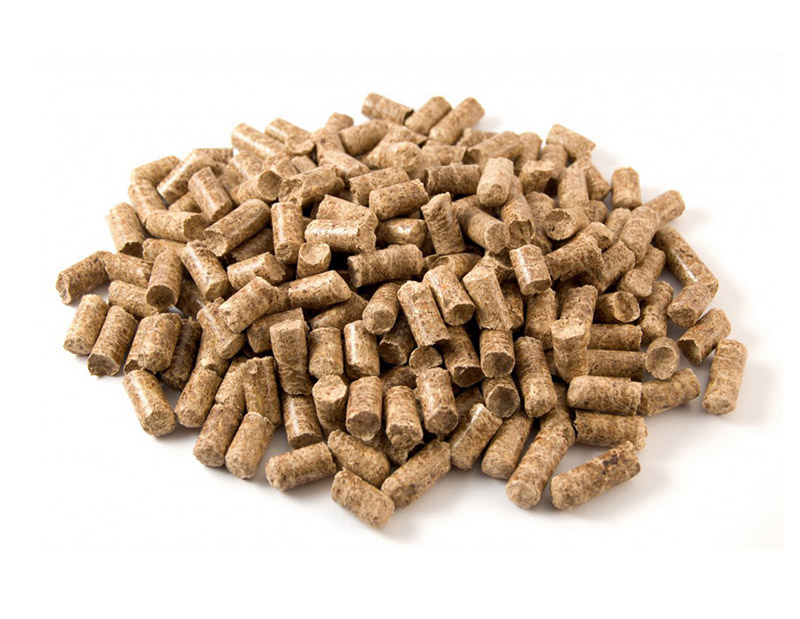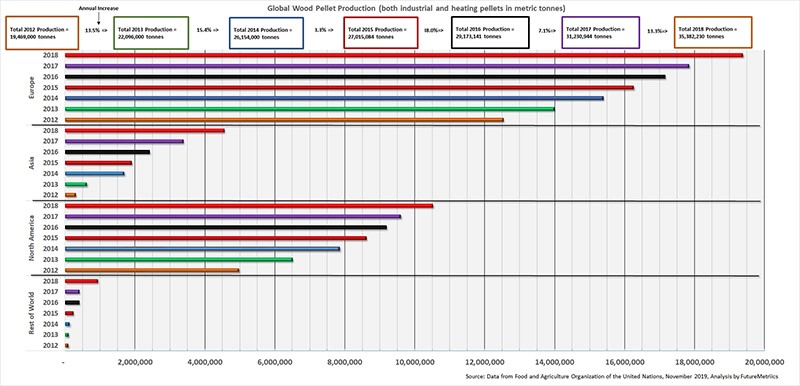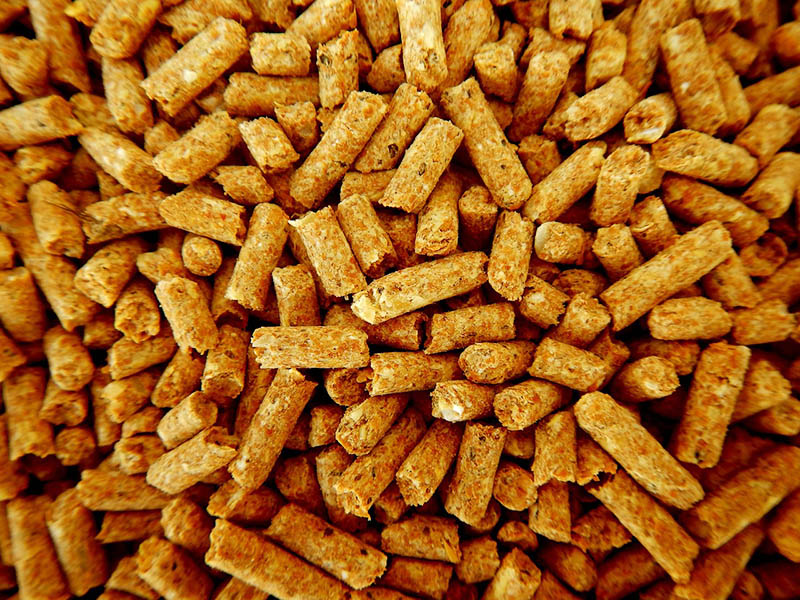Biomass pellet fuel is a solid fuel that is processed by cold densification of crushed biomass straw, forestry waste, and other raw materials using pressure rollers and ring molds at room temperature. It is a wood chip particle with a length of 1-2 centimeters and a diameter typically of 6, 8, 10, or 12mm.

The global biomass pellet fuel market has experienced significant growth in the past decade. From 2012 to 2018, the global wood particle market grew at an average annual rate of 11.6%, from approximately 19.5 million tons in 2012 to approximately 35.4 million tons in 2018. From 2017 to 2018 alone, the production of wood particles increased by 13.3%.

The following is the development status information of the global biomass pellet fuel industry in 2024 compiled by HAMMTECH pressure roller ring mold, for your reference only:
Canada: Record breaking sawdust particle industry
Canada's biomass economy is expected to grow at an unprecedented pace, and the sawdust pellet industry has set a new record. In September, the Canadian government announced an investment of 13 million Canadian dollars in six indigenous biomass projects in northern Ontario and 5.4 million Canadian dollars in clean energy projects, including biomass heating systems.
Austria: Government funding for renovation
Austria is one of the countries with the most forests in Europe, growing over 30 million solid cubic meters of wood annually. Since the 1990s, Austria has been producing sawdust particles. For granular heating, the Austrian government provides 750 million euros for granular heating systems in housing construction, and plans to invest 260 million euros to expand renewable energy. The Austrian RZ particle manufacturer has the largest wood chip particle production capacity in Austria, with a total output of 400000 tons in six locations in 2020.
UK: Tain Port invests 1 million in wood chip particle processing
On November 5th, one of the leading deep-sea ports in the UK, Port Tyne announced a 1 million investment in its sawdust particles. This investment will install state-of-the-art equipment and take a series of measures to help prevent dust emissions from handling dry wood chips entering the UK. These actions have put the Port of Tyne at the forefront of technology and systems in British ports, and highlighted its key role in the development of the offshore renewable energy industry in northeastern England.
Russia: Wood chip particle exports hit a historic high in the third quarter of 2023
In the past few years, the production of sawdust particles in Russia has been steadily increasing. Russia's total production of sawdust particles ranks 8th in the world, accounting for 3% of the world's total production of sawdust particles. With an increase in exports to the UK, Belgium, South Korea, and Denmark, Russian wood chip particle exports reached a quarterly high from July to September this year, continuing the trend of the first half of the year. Russia exported 696000 tons of sawdust particles in the third quarter, an increase of 37% from 508000 tons in the same period last year, and an increase of nearly one-third in the second quarter. In addition, the export of sawdust particles increased by 16.8% year-on-year in September to 222000 tons.
Belarus: Exporting sawdust particles to the European market
The press office of the Belarusian Ministry of Forestry stated that Belarusian sawdust particles will be exported to the EU market, with at least 10000 tons of sawdust particles to be exported in August. These particles will be transported to Denmark, Poland, Italy, and other countries. In the next 1-2 years, at least 10 new sawdust particle enterprises will open in Belarus.
Poland: The particle market continues to grow
The focus of the Polish sawdust particle industry is to increase exports to Italy, Germany, and Denmark, as well as to increase domestic demand from resident consumers. The Post estimates that the production of Polish sawdust particles reached 1.3 million tons (MMT) in 2019. In 2018, residential consumers used 62% of sawdust particles. Commercial or institutional entities use approximately 25% of sawdust particles to generate their own energy or heat, while commercial stakeholders use the remaining 13% to produce energy or heat for sale. Poland is a net exporter of sawdust particles, with a total export value of 110 million US dollars in 2019.
Spain: Record breaking particle production
Last year, the production of sawdust particles in Spain increased by 20%, reaching a record high of 714000 tons in 2019, and is expected to exceed 900000 tons by 2022. In 2010, Spain had 29 granulation plants with a production capacity of 150000 tons, mainly sold to foreign markets; In 2019, 82 factories operating in Spain produced 714000 tons, mainly to the internal market, an increase of 20% compared to 2018.
United States: The sawdust particle industry is in good condition
The sawdust particle industry in the United States has many advantages that other industries envy, as they can also drive business development during the coronavirus crisis. Due to the implementation of home regulations across the United States, as producers of household heating fuels, the risk of immediate demand shock is low. In the United States, Pinnacle Corporation is building its second industrial sawdust particle factory in Alabama.
Germany: Breaking a New Particle Production Record
Despite the corona crisis, in the first half of 2020, Germany produced 1.502 million tons of sawdust particles, setting a new record. Compared with the same period last year (1.329 million tons), the production increased by 173000 tons (13%) again. In September, the price of particles in Germany increased by 1.4% compared to the previous month, with an average price of 242.10 euros per ton of particles (with a purchase volume of 6 tons). In November, wood chips became more expensive on the national average in Germany, with a purchase quantity of 6 tons and a price of 229.82 euros per ton.

Latin America: The growing demand for sawdust particle power generation
Due to lower manufacturing costs, the production capacity of Chilean sawdust particles is rapidly increasing. Brazil and Argentina are the two largest producers of industrial round wood and sawdust particles. The rapid production rate of sawdust particles is one of the main driving factors for the global sawdust particle market in the entire Latin American region, where a large amount of sawdust particles are used for power generation.
Vietnam: Wood chip exports will reach a new historical high in 2020
Despite the impact of Covid-19 and the risks posed by the export market, as well as policy changes in Vietnam to control the legality of imported timber materials, the export revenue of the timber industry exceeded 11 billion US dollars in the first 11 months of 2020, a year-on-year increase of 15.6%. Vietnam's timber export revenue is expected to reach a historic high of nearly 12.5 billion US dollars this year.
Japan: The import volume of wood particles is expected to reach 2.1 million tons by 2020
Japan's grid in electricity pricing (FIT) plan supports the use of sawdust particles in power generation. A report submitted by the Global Agricultural Information Network, a subsidiary of the US Department of Agriculture's Foreign Agriculture Service, shows that Japan imported a record 1.6 million tons of sawdust particles mainly from Vietnam and Canada last year. It is expected that the import volume of sawdust particles will reach 2.1 million tons in 2020. Last year, Japan produced 147000 tons of wood pellets domestically, an increase of 12.1% compared to 2018.
China: Support the application of clean biomass fuels and other technologies
In recent years, with the support of relevant policies from the national and local governments at all levels, the development and utilization of biomass energy in China has achieved rapid development. The white paper "China's Energy Development in the New Era" released on December 21st pointed out the following development priorities:
Clean heating in winter in northern regions is closely related to the lives of the general public and is a major livelihood and popular project. Based on ensuring warm winters for the general public in northern regions and reducing air pollution, clean heating is carried out in rural areas of northern China according to local conditions. Following the policy of prioritizing enterprises, government promotion, and affordability for residents, we will steadily promote the conversion of coal to gas and electricity, and support the use of clean biomass fuels, geothermal energy, solar heating, and heat pump technology. As of the end of 2019, the clean heating rate in northern rural areas was about 31%, an increase of 21.6 percentage points from 2016; Approximately 23 million households have been replaced with loose coal in rural areas of northern China, including approximately 18 million households in the Beijing Tianjin Hebei and surrounding areas, as well as in the Fenwei Plain.
What are the development prospects of the biomass pellet fuel industry in 2021?
HAMMTECH roller ring mold believes that as experts have predicted for many years, the global market demand for biomass pellet fuel continues to grow.
According to the latest foreign report, it is estimated that by 2027, the global market size of wood chips is expected to reach 18.22 billion US dollars, with a revenue based compound annual growth rate of 9.4% during the forecast period. The growth in demand in the power generation industry may drive the market during the forecast period. In addition, increasing awareness of using renewable energy for power generation, coupled with the high combustion of wood particles, may increase the demand for wood particles during the forecast period.
Post time: Apr-09-2024
